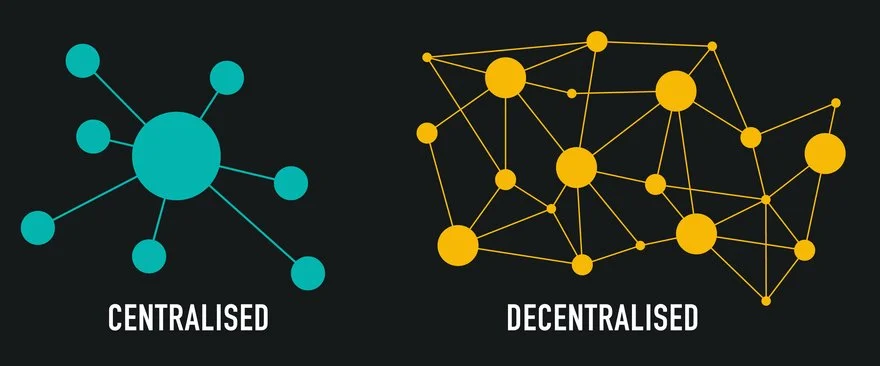Did you know the DeFi market could hit almost $200 billion by 2028? Decentralized Finance, or DeFi, is changing how we think about money. It cuts out the middleman like banks, using tech to make things more open. But even with its huge potential, DeFi has some problems it needs to fix to become mainstream. This article dives into these problems and suggests fixes for them.
High Transaction Fees and Scalability Issues
One big problem with DeFi are high fees. Popular blockchains, such as Ethereum, get crowded. As a result, fees, called “gas,” go way up! It makes it hard for people with less money to join in. Imagine paying more in fees than you earn!
The Impact of Gas Fees on DeFi Participation
High gas fees stop many from using DeFi. You can’t easily move your money, swap tokens, or vote on changes. It prices out smaller investors. Take a look at the chart. It shows how gas fees vary depending on what you do in DeFi.
Layer-2 Scaling Solutions: A Promising Fix
Layer-2 solutions are like express lanes for blockchains. Optimism, Arbitrum, and zk-Rollups bundle up many transactions. These bundles move off the main blockchain. This reduces the load and lowers fees. There can be trade-offs, though. Security or how decentralized things are could change.
Blockchain Alternatives for Lower Fees
Some blockchains offer lower fees right off the bat. Solana, Avalanche, and Binance Smart Chain are faster and cheaper. Moving DeFi apps to these might help. But think about it! A smaller network might not be as secure or attract as many people.
Security Vulnerabilities and Smart Contract Risks
Security is a really big deal in DeFi. Hacks and bugs in smart contracts can cost a lot. Smart contracts can’t be changed once they are launched. So, mistakes can be super costly.
Common Attack Vectors in DeFi
Hackers use tricks such as flash loans. They might also mess with oracles, which feed data to smart contracts. They can exploit weaknesses in the code. A single hack can drain millions of dollars from a DeFi project.
Auditing and Formal Verification: Strengthening Defenses
Smart contract audits are a must. Experts check the code for problems before launch. Formal verification uses math to prove code works right. Both of these reduce risks.
Insurance Protocols: Mitigating Financial Loss
What if something goes wrong despite all the checks? DeFi insurance steps in. Nexus Mutual and Cover Protocol are two options. People buy coverage to protect against smart contract fails and bugs. If disaster strikes, the insurance pays out.
Impermanent Loss in Liquidity Pools
Impermanent loss is tricky to understand. When prices change a lot, liquidity providers can lose money. It is like the tokens go on a wild ride. The more different the prices get, the bigger the loss.
Understanding the Mechanics of Impermanent Loss
Imagine you put two tokens in a pool, each worth $10. Total value is $20. Later, one token doubles to $20, while the other stays at $10. An arbitrage bot balances the pool. You end up with fewer of the rising token and more of the falling one. Your total value might now be less than $20, even though one token increased a lot!
Strategies for Minimizing Impermanent Loss
Sticking to stablecoin pools helps reduce risk. They don’t move in price as much. Some projects have extra safety to shield you from loss. You can also keep a close watch on the pool to make smart moves.
Alternative Liquidity Pool Designs
New designs are always popping up. Uniswap V3 lets you focus your liquidity, which boosts gains but also risks. Proactive market making is another new approach. The goal? Less impermanent loss.
Regulatory Uncertainty and Compliance Challenges
Rules for DeFi are still unclear in many places. This is a big issue. Governments could crack down, which would hurt DeFi.
The Global Regulatory Landscape for DeFi
Some countries are friendly to DeFi. Others are unsure or even hostile. The U.S., EU, and countries in Asia have different approaches. Applying old financial rules to new, decentralized tech is tough.
KYC/AML Solutions for DeFi
KYC/AML means “Know Your Customer/Anti-Money Laundering”. These rules stop illegal activities. DeFi needs ways to follow these rules without giving up privacy. Decentralized ID systems and on-chain reputations might help.
The Role of DAOs in Regulatory Compliance
DAOs, or Decentralized Autonomous Organizations, can help with compliance. They can follow rules and adapt as needed. DAOs might need special legal setups to work well.
Conclusion
DeFi faces challenges: high fees, security risks, impermanent loss, and unclear regulations. Layer-2 scaling, audits, insurance, new pool designs, and clear rules can fix these problems. Solving these issues is key to DeFi growing and reaching its full potential. Dive deeper into DeFi. Join the conversation and help build the future of finance!








Facebook Comments